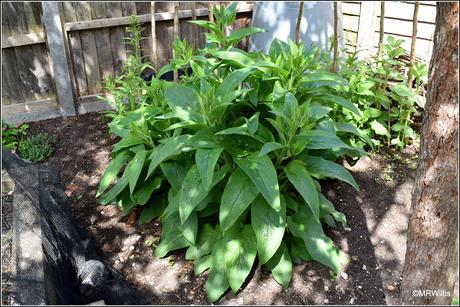
The stems of this plant can easily reach 5 feet tall.
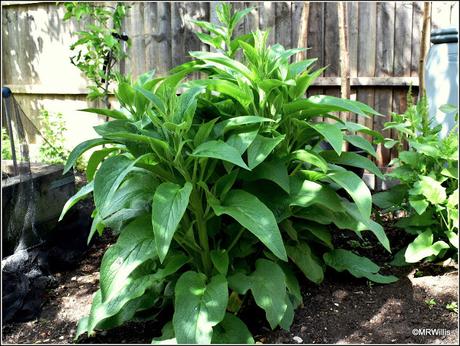
My Comfrey was just coming into flower, and I believe this is the perfect time to make it into plant food because it contains the highest concentrations of nutrients. This next photo shows a few flower-buds, but it also shows how hairy the leaves and stems of this plant are, so it is advisable to wear gloves when handling it.
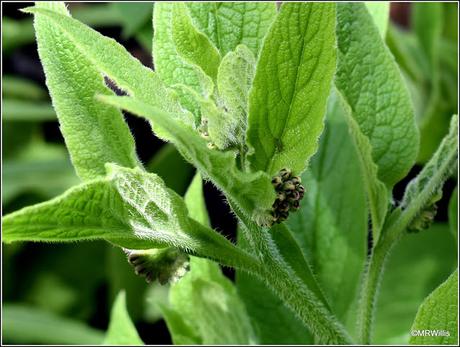
My method of making Comfrey Tea couldn't be easier. I cut down the tall leafy stems and roughly chop them into suitable containers, such as the lidded plastic tubs in which pelleted chicken manure is usually sold.
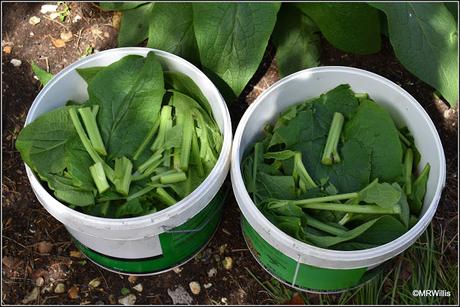
Pressing the Comfrey down firmly, I then add water to fill the containers to about the halfway point. I cover the containers to stop insects laying their eggs in the stagnant water - and to keep in the smell, because as the Comfrey rots it will become very smelly. For this reason it makes sense to put the maturing "tea" well away from your house if possible!
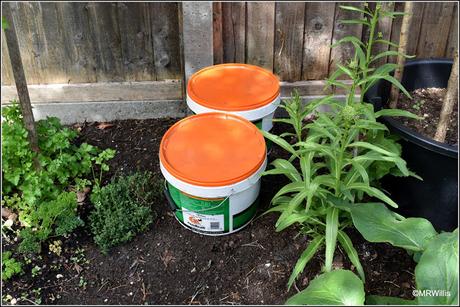
Once this is done you just leave the Comfrey to rot down in the water. This will probably take a month or so, depending on the weather. Warm weather will speed up the decomposition process. I like to check the progress once in a while, and I find that poking / stirring the mixture occasionally will help it to break down more rapidly. When it is ready it will be a foul-smelling dark green/brown murky liquid, full of fibres. At this point you decant it into a watering-can and apply it without further dilution to the plants you want to feed. Since I don't have a lot of Comfrey I can't make huge quantities of the tea, so I tend to reserve it for my top priority plants. Apparently the balance of nutrients (mainly Nitrogen, Potassium and Phosphorus) in Comfrey tea is ideal for vegetables that produce fruit (if you know what I mean!) - like tomatoes, chillis, peppers, aubergines and cucumbers.
A month from now my tomatoes should be setting fruit, and at that point I'm sure they will appreciate a good dose of the Tea!
